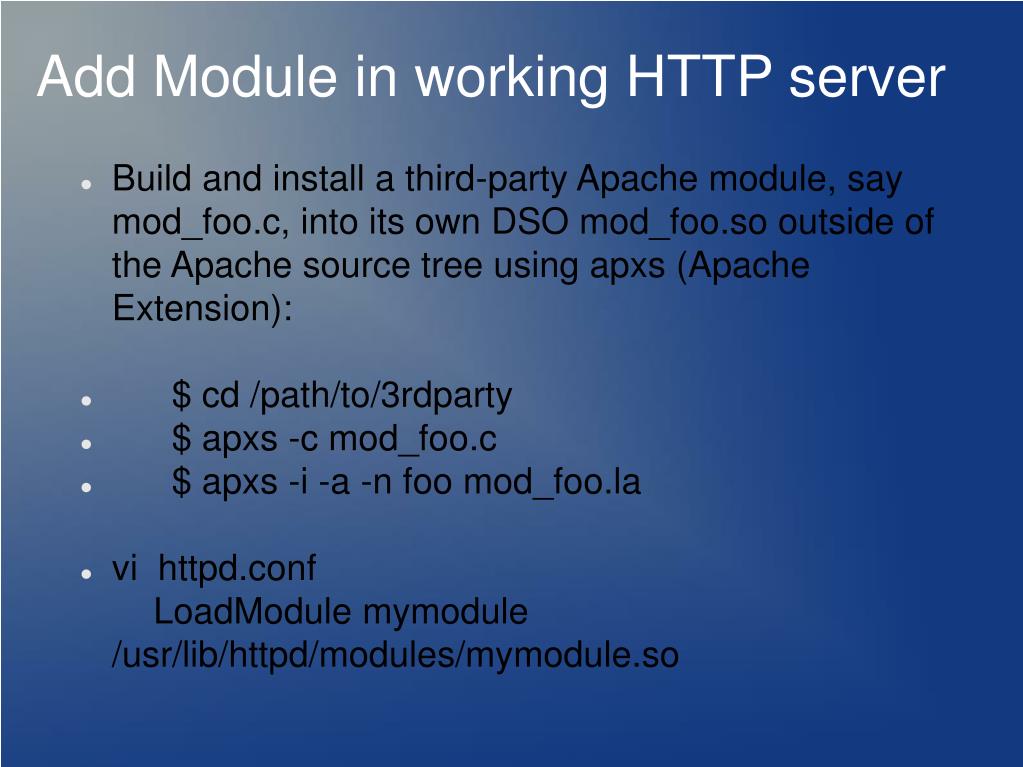- Install Apache 2.4 from Source on Ubuntu Apache Server (HTTP) is a free open source web server for Unix-like systems, windows and other operating systems. We’ll discuss about to install Apache 2.4 from source compilation and detailed information about Web server on linux system. This article will be helpful for those who don’t know compilation of software from source.
- Download Apache GUI for free. A free open sourced Apache Http Server GUI developed with Java. This project is used to provide a free java based open source Apache Http Server GUI. The solution is deployed as a web application that is accessible through a web browser.
- OPEN: The Apache Software Foundation provides support for 300+ Apache Projects and their Communities, furthering its mission of providing Open Source software for the public good. INNOVATION: Apache Projects are defined by collaborative, consensus-based processes, an open, pragmatic software license and a desire to create high quality software.


Oct 08, 2018 Apache Web Server is one of the most popular HTTP servers on the Internet today, due to its open-source nature, rich modules, and features and can run on almost major platforms and operating systems. Apache is an open-source HTTP server for modern operating systems including Linux, Unix, and Windows and is the world's most widely used web server software. It was originally based on the HTTP server developed at the National Center for Supercomputing Applications (NSCA) in the United States.
Configuring the source tree
The next step is to configure the Apache source tree for your particular platform and personal requirements. This is done using the script configure included in the root directory of the distribution. (Developers downloading an unreleased version of the Apache source tree will need to have autoconf and libtool installed and will need to run buildconf before proceeding with the next steps. This is not necessary for official releases.)
To configure the source tree using all the default options, simply type ./configure. To change the default options, configure accepts a variety of variables and command line options.
The most important option is the location --prefix where Apache is to be installed later, because Apache has to be configured for this location to work correctly. More fine-tuned control of the location of files is possible with additional configure options.
Apache Httpd Source Code
Also at this point, you can specify which features you want included in Apache by enabling and disabling modules. Apache comes with a wide range of modules included by default. They will be compiled as shared objects (DSOs) which can be loaded or unloaded at runtime. You can also choose to compile modules statically by using the option --enable-module=static.
Apache Httpd Source Code
Additional modules are enabled using the --enable-module option, where module is the name of the module with the mod_ string removed and with any underscore converted to a dash. Similarly, you can disable modules with the --disable-module option. Be careful when using these options, since configure cannot warn you if the module you specify does not exist; it will simply ignore the option.
In addition, it is sometimes necessary to provide the configure script with extra information about the location of your compiler, libraries, or header files. This is done by passing either environment variables or command line options to configure. For more information, see the configure manual page. Or invoke configure using the --help option.
For a short impression of what possibilities you have, here is a typical example which compiles Apache for the installation tree /sw/pkg/apache with a particular compiler and flags plus the two additional modules mod_ldap and mod_lua:


$ CC='pgcc' CFLAGS='-O2'
./configure --prefix=/sw/pkg/apache
--enable-ldap=shared
--enable-lua=shared
When configure is run it will take several minutes to test for the availability of features on your system and build Makefiles which will later be used to compile the server.
Details on all the different configure options are available on the configure manual page.




